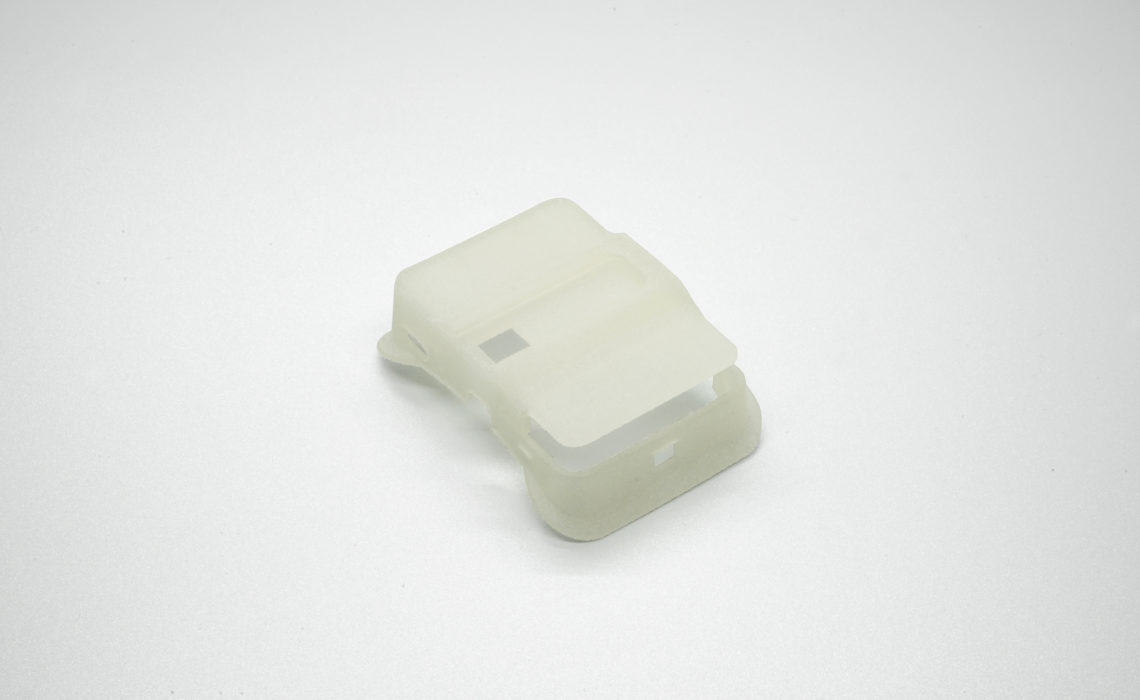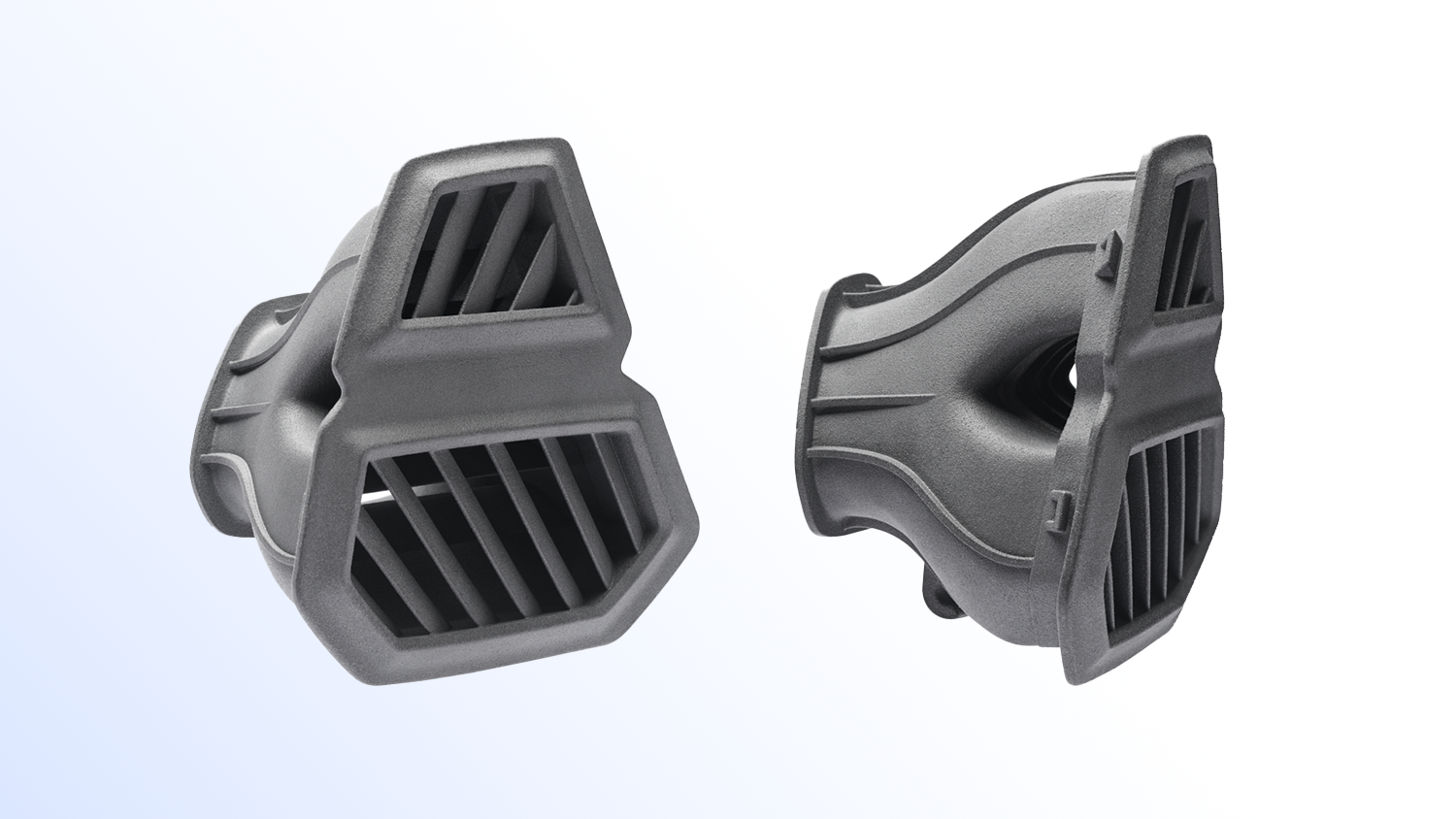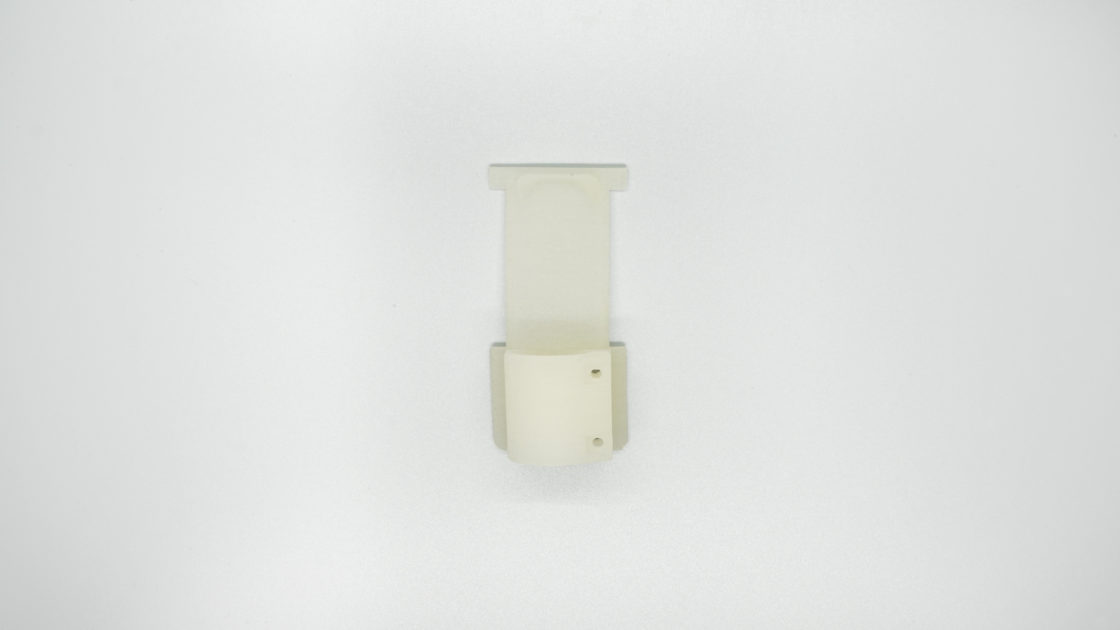
Thermoplastics like Polypropylene continue to rise in popularity as industrial manufacturers seek 3D printing materials with strength and durability. Because it is so highly suited for rapid prototyping, Polypropylene for 3D printing allows companies of all sizes to innovate, develop, and evaluate products visually and in terms of functionality.
With Polypropylene 3D printing, manufacturers have the ability to print as many iterations as necessary, and test rigorously in cases where such action is required during product development. For some designers and engineers that may mean 3D printing several prototypes for evaluations, and for others, they may need to create a hundred or more for intensive inspection, testing, and refining before taking the step to finalize end-use parts. Rapid prototyping with Polypropylene for 3D printing is fast and much more economical than using traditional manufacturing with requirements in lead times and tooling.
What is wonderfully unique about Polypropylene–and certainly convenient in terms of manufacturing–is that this industrial-grade material can be used far beyond rapid prototyping, transitioning into 3D printing of high performing, functional parts too. Highly complex parts can be made for applications which require superior mechanical strength and dependability.
With the demand for advanced materials and technology growing, Shapeways also sees many engineers and designers taking advantage of the intense design freedom Polypropylene delivers, mainly due to the lack of supports required during 3D printing. Designers and engineers are able to innovate like never before, creating products that may have been impossible previously with traditional manufacturing, but also in creating designs freed from the constraints of intricate, attached support structures. There is also the opportunity to redesign, improving more complex geometries for better form and functionality.
Why Polypropylene for 3D Printing?
Shapeways offers High Reusability Polypropylene with Multi Jet Fusion (MJF) technology, and Ultrasint® PP nat 01 for Selective Laser Sintering (SLS). These materials are unique not only because they can be used for both prototypes and functional components, but also because end-use parts are produced with mechanical properties and performance similar to products manufactured via injection molding (IM), offering extreme durability for long-term use, along with the smooth surface finish associated with IM.
Polypropylene is also easy to process, with high reusability of powder later. This is especially helpful in terms of manufacturing sustainability when Shapeways is 3D printing larger volumes of parts.
Both lightweight and strong, Polypropylene for 3D printing offers the following material characteristics:
- Biocompatibility – Polypropylene meets ISO 10993 and US FDA guidance.
- Chemical resistance – Excellent resistance to chemicals makes this material appealing for use in manufacturing parts that may be exposed to corrosive elements.
- Low moisture absorption – Polypropylene is good for end-use parts that may be routinely exposed to liquids.
- High elongation at break – Measured by the amount of deformation that a product experiences under strain, Polypropylene is not only imbued with high elasticity, but also high elongation at break, listed as 20% for Elongation at Break X and 18% for Elongation at Break Z.
- Tensile strength – Defining how much stress a part can take before it breaks, tensile strength is measured in megapascals (MPa), which are units of pressure. With a good tensile strength like 30 (X and Z) MPa, Polypropylene is a tough material offering long-term durability.
Powder-based technologies like MJF and SLS 3D do not require supports, offering further benefit. Parts are already supported during the 3D printing process with unused powder. As it bunches up around the parts, they are stabilized throughout the process. Without the requirements to factor in intricate supports, engineers have much greater flexibility in the design process. There is also much less chance for damage to the 3D printed parts in post-processing since the hassle of removing supports is eliminated.

Polypropylene with Multi-Jet Fusion Technology
Shapeways offers Multi Jet Fusion (MJF) for complex 3D prints, resulting in prototypes and parts that are robust, with strong mechanical properties. This powerful technology is powder-based, but it does not rely on laser heat to melt layers together; instead, one layer of powder is deposited after the other, 80 microns at a time, with an inkjet array moving back and forth jetting out fusing agents to fuse the powder particles together, and detailing agents to assure good detail and smooth surface texture.
As the layers melt together quickly via thermal heat, resulting parts are stable, well-defined, and may feature details like interlocking parts that can be manufactured in one piece without any further assembly required later. MJF is beneficial overall due to less chance of warping, shrinking, or failure in 3D printed parts. Customization is further encouraged without the need for supports, and designers are able to make complex parts faster, with less time spent dealing with cooling and post-processing.
Like Polypropylene, MJF 3D printing offers many impressive advantages, making the two a winning combination for industrial strength in product development over a wide range of applications. MJF 3D printing includes highlights such as:
- Consistency in mechanical properties.
- A standalone cooling system which helps eliminate challenges specific to Polypropylene like warping and shrinkage.
- Streamlined production and efficiency in post-processing.
- Improved speed in turnaround for project deadlines
Design Guidelines
For this material, 3D models must be within the following minimum and maximum bounding box sizes:
- Bounding Box Min
- At least 1 extant dimension over 19 mm
- Bounding Box Max
- 280 x 280 x 280 mm
This material is available in a natural gray finish, featuring a matte surface.
Find out more about design guidelines for Polypropylene 3D printing with MJF technology here.

Polypropylene with SLS 3D Printing Technology
SLS 3D printing begins as thin layers of polymer powder are dispersed over the build platform. A computer-controlled CO2 laser traces the cross-section of the 3D design on the powder. It then scans many fine layers, fusing them all together at a high temperature, just under the melting point, until the 3D printed structure is complete. Using Natural Polypropylene (SLS), many different parts can be created with fine features and details–and for complex geometries.
SLS industrial 3D printers can range in build volume size, for example smaller printers can have a build volume of 200 mm x 250 mm x 330 mm to larger printers with 700 x 380 x 580 mm, featuring a layer thickness of 100 to 120 microns. Thousands of parts may be included in one build, boasting higher accuracy and repeatability than most techniques.
3D printing Polypropylene with SLS technology offers the following benefits:
- Strong mechanical properties, to include durability and high plasticity.
- Excellence in manufacturing for serial production and rapid prototypes.
- Compatibility for post-processing like hot plate and vibratory welding.
- Suitable for automotive coolant reservoirs and custom production tools.
Design Guidelines
For this material, 3D models must be within the following minimum and maximum bounding box sizes:
- Bounding Box Min
- 7 x 7 x 2 mm
- Bounding Box Max
- 280 x 280 x 280 mm
This material is available in a natural, slightly translucent with a light yellowish shade, featuring a matte surface.
Find out more about design guidelines for Polypropylene 3D printing with SLS technology here.
Applications for 3D Printing with Polypropylene
This versatile material is ideal for a wide range of applications like:
- Automotive – Manufacturers are able to use Polypropylene to test parts for fit and function in vehicles, as well as using the same material for interior parts or critical, high-performance exterior components. Polypropylene 3D printing is also used in fluid systems for automotive applications.
- Consumer goods like home goods and parts for appliances, and especially products which require resistance from chemicals or water.
- Electrical and sports goods such as health care and orthopedic products.
- Industrial goods such as tubes and piping, and tools, jigs, and fixtures.
- Customized medical devices for patient-specific treatment creating products like prosthetics, orthotics, and even orthodontics.
Polypropylene 3D printing has become widely used in all of the above applications not only due to its versatility but because of its potential for long-term use in products. While this material may be 3D printed to manufacture important car parts, it can also be used to create highly useful, ubiquitous items like living hinges–small hinges that open upward for items like plastic bottle caps.
Upload your design and get an instant quote now!
About Shapeways
Enjoy the benefits of this advanced technology and a wide range of materials from Shapeways for 3D printing your creations with accuracy, complex detail, and no minimum or limits in terms of mass customization or single part orders. Shapeways has worked with over 1 million customers in 160 countries to 3D print over 21 million parts! Read about case studies, find out more about Shapeways solutions, and get instant quotes here.

